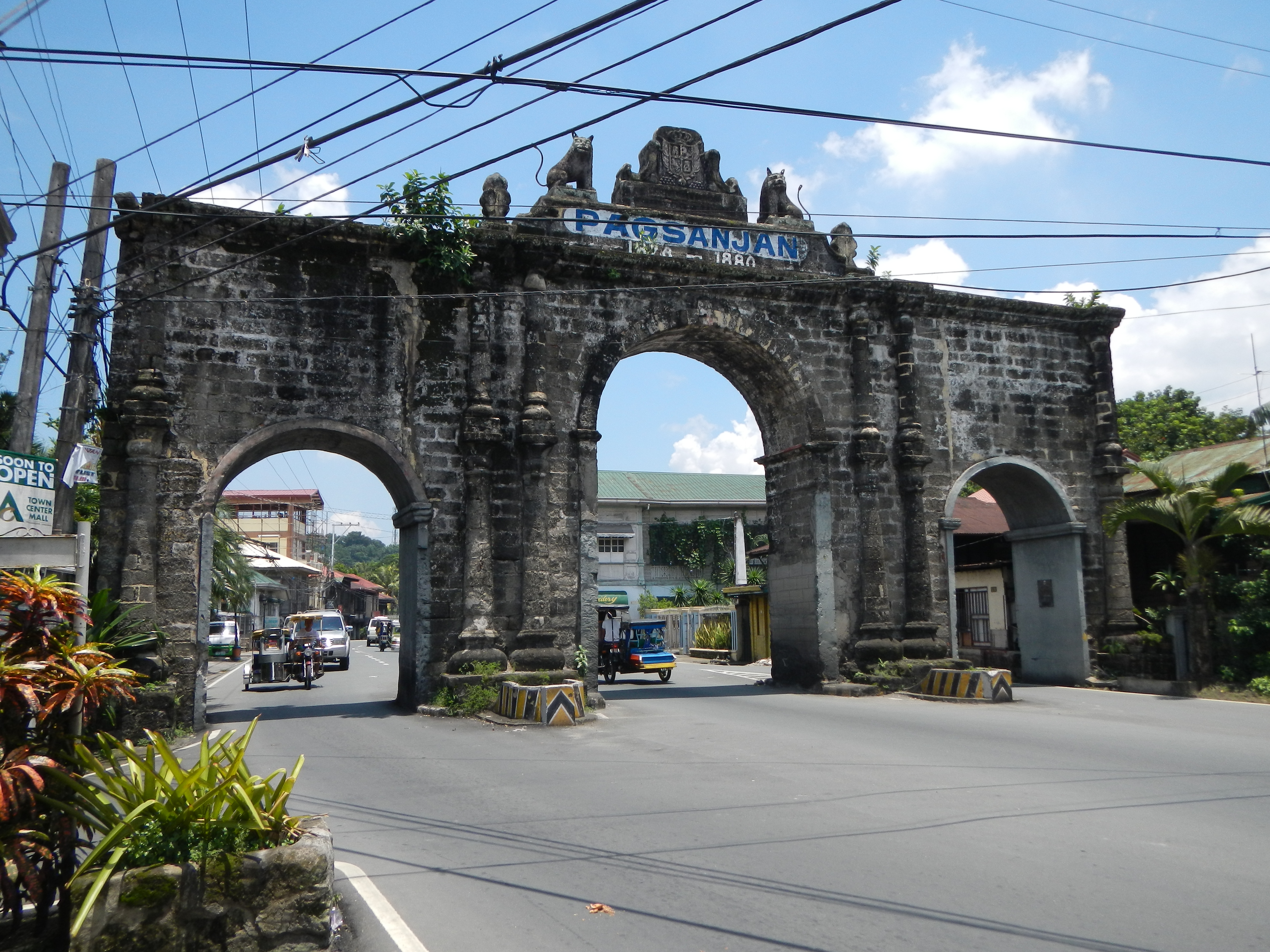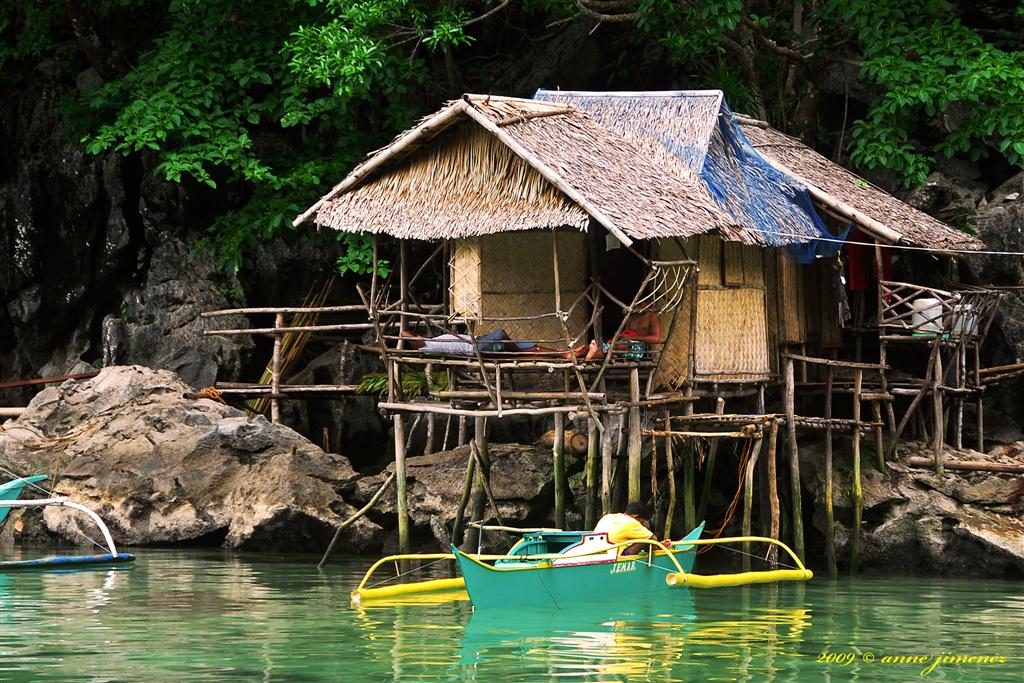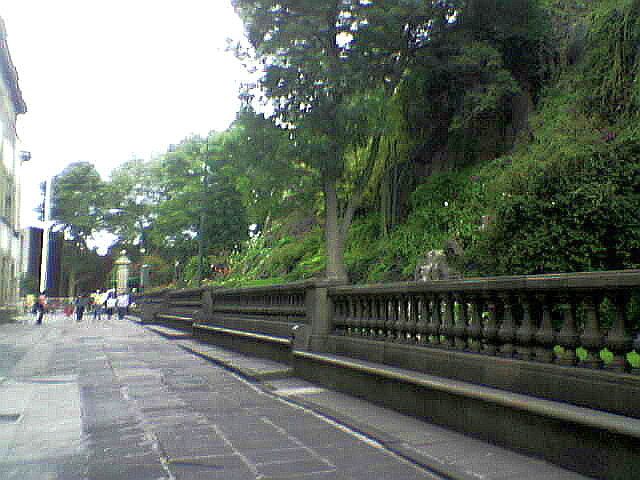|
Our Lady Of Guadalupe Parish Church (Pagsanjan)
Our Lady of Guadalupe Parish Church, designated as the Diocesan Shrine of Our Lady of Guadalupe of the Roman Catholic Diocese of San Pablo, is the only Roman Catholic church in Pagsanjan, Laguna, Philippines, and the oldest church in the Philippines under the patronage of Our Lady of Guadalupe. It is home to the patroness of Pagsanjan, Our Lady of Guadalupe, whose image was a gift from Mexico. History A former visita of Lumban, the parish church of Pagsanjan was founded on November 12, 1687, by Franciscan missionary Father Agustin de la Magdalena as its first pastor (parish priest). The first church was originally made of light materials like bamboo, nipa and wood in 1688 by natives of Pagsanjan under forced labor. A larger and more solid church constructed from adobe with a red-tiled roof was built in 1690 with the help of Chinese Miguel Guan Co and chief ''alguacil alferez'' Alonzo Garcia to replace the original church. Further renovations were conducted from 1847 to 1852 ... [...More Info...] [...Related Items...] OR: [Wikipedia] [Google] [Baidu] |
Pagsanjan, Laguna
Pagsanjan (pronounced ''PAG-sang-han''), officially the Municipality of Pagsanjan ( tgl, Bayan ng Pagsanjan), is a 3rd class municipality in the province of Laguna, Philippines. According to the 2020 census, it has a population of 44,327 people. Situated from Santa Cruz and southeast of Manila, this town can reach via Manila East Road or Slex. Pagsanjan is the tourist capital of Laguna and is the home of the Bangkero Festival held every March. The ''bangkeros'' are tour guides who steer boats along the river to Pagsanjan Falls (also called Magdapio Falls), for which the town is well known but is actually in neighboring Cavinti. Pagsanjan was the capital of the province of Laguna for 170 years (1688–1858) during which the town prospered as the commercial, cultural and learning center of the province. Etymology Pagsanjan is located in the riparian delta formed by the confluence of the Balanac and Bumbungan rivers. Originally called ''Pinágsangahán'' ("branching" or ... [...More Info...] [...Related Items...] OR: [Wikipedia] [Google] [Baidu] |
Nypa Fruticans
''Nypa fruticans'', commonly known as the nipa palm (or simply nipa, from ms, nipah) or mangrove palm, is a species of palm native to the coastlines and estuarine habitats of the Indian and Pacific Oceans. It is the only palm considered adapted to the mangrove biome. The genus ''Nypa'' and the subfamily Nypoideae are monotypic taxa because this species is their only member. Description Unlike most palms, the nipa palm's trunk grows beneath the ground; only the leaves and flower stalk grow upwards above the surface. The leaves extend up to in height. The flowers are a globular inflorescence of female flowers at the tip with catkin-like red or yellow male flowers on the lower branches. The flower produces woody nuts arranged in a globular cluster up to across on a single stalk. The ripe nuts separate from the ball and float away on the tide, occasionally germinating while still water-borne. Fossil record While only one species of ''Nypa'' now exists, ''N. fruticans'', w ... [...More Info...] [...Related Items...] OR: [Wikipedia] [Google] [Baidu] |
Roman Catholic Churches In Laguna (province)
Roman or Romans most often refers to: *Rome, the capital city of Italy *Ancient Rome, Roman civilization from 8th century BC to 5th century AD *Roman people, the people of ancient Rome *''Epistle to the Romans'', shortened to ''Romans'', a letter in the New Testament of the Christian Bible Roman or Romans may also refer to: Arts and entertainment Music *Romans (band), a Japanese pop group *Roman (album), ''Roman'' (album), by Sound Horizon, 2006 *Roman (EP), ''Roman'' (EP), by Teen Top, 2011 *"Roman (My Dear Boy)", a 2004 single by Morning Musume Film and television *Film Roman, an American animation studio *Roman (film), ''Roman'' (film), a 2006 American suspense-horror film *Romans (2013 film), ''Romans'' (2013 film), an Indian Malayalam comedy film *Romans (2017 film), ''Romans'' (2017 film), a British drama film *The Romans (Doctor Who), ''The Romans'' (''Doctor Who''), a serial in British TV series People *Roman (given name), a given name, including a list of people and f ... [...More Info...] [...Related Items...] OR: [Wikipedia] [Google] [Baidu] |
Marked Historical Structures Of The Philippines
In linguistics and social sciences, markedness is the state of standing out as nontypical or divergent as opposed to regular or common. In a marked–unmarked relation, one term of an opposition is the broader, dominant one. The dominant default or minimum-effort form is known as ''unmarked''; the other, secondary one is ''marked''. In other words, markedness involves the characterization of a "normal" linguistic unit against one or more of its possible "irregular" forms. In linguistics, markedness can apply to, among others, Phonology, phonological, Grammar, grammatical, and Semantics, semantic oppositions, defining them in terms of marked and unmarked oppositions, such as ''honest'' (unmarked) vs. ''dishonest'' (marked). Marking may be purely semantic, or may be realized as extra morphology. The term derives from the marking of a grammatical role with a suffix or another element, and has been extended to situations where there is no morphological distinction. In social scien ... [...More Info...] [...Related Items...] OR: [Wikipedia] [Google] [Baidu] |
Pagsanjan Arch
Pagsanjan Arch also known as ''Puerto Real'' or ''Arco Real'' is a historic town gate of Pagsanjan, Laguna, Philippines built from 1878 to 1880 under the supervision of Fray Cipriano Bac. The arch was built by the people of Pagsanjan to express gratitude to their patroness, the Our Lady of Guadalupe, from protecting the town from bandits in 1877. Location The arch is located at the western entrance of the town along the National Highway. It leads to Rizal Street (''formerly Calle Real'') of the town. History The Story of the Bandits and the Virgin of Guadalupe Bandits (or ''tulisanes'') were rampant in Laguna during the last years of the Spanish colonization. Even the ''guardia civil ''at that time cannot control the acts of the ''tulisanes. ''On midnight of December 8, 1877, a group of bandits led by ''Tangkad'' who already plundered the nearby town of Majayjay is nearly approaching the western entrance of Pagsanjan. When the bandits are approaching the town, a beautiful ... [...More Info...] [...Related Items...] OR: [Wikipedia] [Google] [Baidu] |
Manila
Manila ( , ; fil, Maynila, ), officially the City of Manila ( fil, Lungsod ng Maynila, ), is the capital of the Philippines, and its second-most populous city. It is highly urbanized and, as of 2019, was the world's most densely populated city proper. Manila is considered to be a global city and rated as an Alpha – City by Globalization and World Cities Research Network (GaWC). It was the first chartered city in the country, designated as such by the Philippine Commission Act 183 of July 31, 1901. It became autonomous with the passage of Republic Act No. 409, "The Revised Charter of the City of Manila", on June 18, 1949. Manila is considered to be part of the world's original set of global cities because its commercial networks were the first to extend across the Pacific Ocean and connect Asia with the Spanish Americas through the galleon trade; when this was accomplished, it marked the first time in world history that an uninterrupted chain of trade routes circling ... [...More Info...] [...Related Items...] OR: [Wikipedia] [Google] [Baidu] |
Tepeyac
Tepeyac or the Hill of Tepeyac, historically known by the names Tepeyacac and Tepeaquilla, is located inside Gustavo A. Madero, the northernmost ''delegación'' or borough of Mexico City. According to the Catholic tradition, it is the site where Saint Juan Diego met the Virgin of Guadalupe in December 1531, and received the iconic image of the Lady of Guadalupe. The Basilica of Our Lady of Guadalupe located there is one of the most visited Catholic shrines in the world. Spanish colonists erected a Catholic chapel at the site, Our Lady of Guadalupe, "the place of many miracles."Diaz, B., 1969, The Conquest of New Spain, London: Penguin Books, It forms part of the Sierra de Guadalupe mountain range. Pre-Columbian history Tepeyac Hill "had been a place for worshipping Aztec earth goddesses." Tepeyac is believed to have been a Pre-Columbian worship site for the indigenous mother goddess Tonantzin Coatlaxopeuh ("Tonantzin" is a title of the greatest respect and "Coatlaxopeuh" is a ... [...More Info...] [...Related Items...] OR: [Wikipedia] [Google] [Baidu] |
Juan Diego
Juan Diego Cuauhtlatoatzin, also known as Juan Diego (; 1474–1548), was a Chichimec peasant and Marian visionary. He is said to have been granted apparitions of the Virgin Mary on four occasions in December 1531: three at the hill of Tepeyac and a fourth before don Juan de Zumárraga, then bishop of Mexico. The Basilica of Our Lady of Guadalupe, located at the foot of Tepeyac, houses the cloak ('' tilmahtli'') that is traditionally said to be Juan Diego's, and upon which the image of the Virgin is said to have been miraculously impressed as proof of the authenticity of the apparitions. Juan Diego's visions and the imparting of the miraculous image, as recounted in oral and written colonial sources such as the ''Huei tlamahuiçoltica '', are together known as the Guadalupe event ( es, el acontecimiento Guadalupano), and are the basis of the veneration of Our Lady of Guadalupe. This veneration is ubiquitous in Mexico, prevalent throughout the Spanish-speaking Americas, and inc ... [...More Info...] [...Related Items...] OR: [Wikipedia] [Google] [Baidu] |
Our Lady Of Guadalupe Church Pagsanjan Inside (General Taino, Pagsanjan, Laguna; 06-28-2023)
Our or OUR may refer to: * The possessive form of " we" * Our (river), in Belgium, Luxembourg, and Germany * Our, Belgium, a village in Belgium * Our, Jura, a commune in France * Office of Utilities Regulation (OUR), a Politics of Jamaica#Regulatory services, government utility regulator in Jamaica * Operation Underground Railroad, a non-profit organization that helps rescue sex trafficking victims * Operation Unified Response, the United States military's response to the 2010 Haiti earthquake * Ownership, Unity and Responsibility Party, a political party in the Solomon Islands See also * Ours (other) {{Disambiguation, geo ... [...More Info...] [...Related Items...] OR: [Wikipedia] [Google] [Baidu] |
Roman Catholic Archdiocese Of Lipa
The Archdiocese of Lipa is a Latin Church ecclesiastical territory or archdiocese of the Catholic Church in the Philippines comprising the civil province of Batangas. Its cathedral is the Cathedral of Lipa located in the episcopal see of Lipa. First created in 1910 from the Archdiocese of Manila, the diocese was elevated into its present status in 1972. Today, the Archdiocese of Lipa's ecclesiastical province covers Batangas and suffragan territories in the civil provinces of Quezon, Marinduque, and Aurora. The archdiocese itself is divided into 14 vicariates further comprising a total of 64 parishes. In addition, the Archdiocese also serves as the de facto overseer of the Apostolic Vicariate of Calapan in Oriental Mindoro and San Jose in Occidental Mindoro, all exempt dioceses of the Holy See (with the vicariates under the jurisdiction of the Congregation for the Evangelization of Peoples). History Creation The Diocese of Lipa was created on April 10, 1910, separating it fr ... [...More Info...] [...Related Items...] OR: [Wikipedia] [Google] [Baidu] |
Transept
A transept (with two semitransepts) is a transverse part of any building, which lies across the main body of the building. In cruciform churches, a transept is an area set crosswise to the nave in a cruciform ("cross-shaped") building within the Romanesque and Gothic Christian church architectural traditions. Each half of a transept is known as a semitransept. Description The transept of a church separates the nave from the sanctuary, apse, choir, chevet, presbytery, or chancel. The transepts cross the nave at the crossing, which belongs equally to the main nave axis and to the transept. Upon its four piers, the crossing may support a spire (e.g., Salisbury Cathedral), a central tower (e.g., Gloucester Cathedral) or a crossing dome (e.g., St Paul's Cathedral). Since the altar is usually located at the east end of a church, a transept extends to the north and south. The north and south end walls often hold decorated windows of stained glass, such as rose windows, in sto ... [...More Info...] [...Related Items...] OR: [Wikipedia] [Google] [Baidu] |
Romanesque Architecture
Romanesque architecture is an architectural style of medieval Europe characterized by semi-circular arches. There is no consensus for the beginning date of the Romanesque style, with proposals ranging from the 6th to the 11th century, this later date being the most commonly held. In the 12th century it developed into the Gothic style, marked by pointed arches. Examples of Romanesque architecture can be found across the continent, making it the first pan-European architectural style since Imperial Roman architecture. The Romanesque style in England and Sicily is traditionally referred to as Norman architecture. Combining features of ancient Roman and Byzantine buildings and other local traditions, Romanesque architecture is known by its massive quality, thick walls, round arches, sturdy pillars, barrel vaults, large towers and decorative arcading. Each building has clearly defined forms, frequently of very regular, symmetrical plan; the overall appearance is one of simplic ... [...More Info...] [...Related Items...] OR: [Wikipedia] [Google] [Baidu] |







